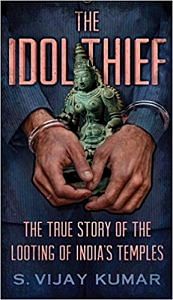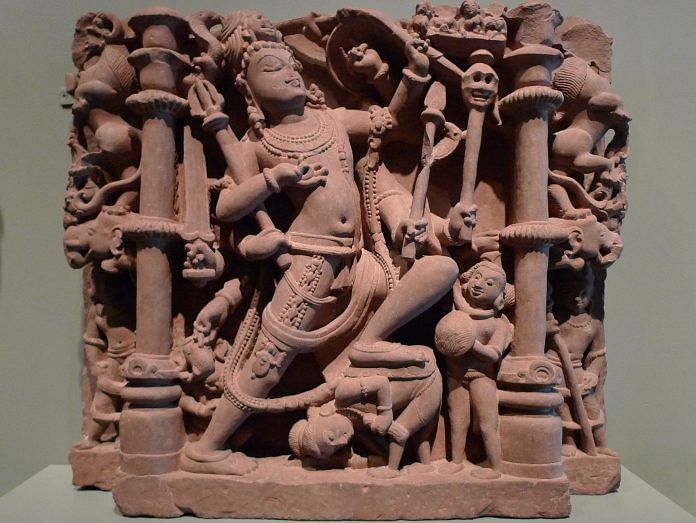Subhash Kapoor, smuggler of Indian art, eluded Indian officials for years because he had the backing of sources who could never be identified.
Subhash Kapoor and Sanjeevi Asokan had been dealing in antiquities for decades before they were caught. The Suthamalli and Sripuranthan idols, which ultimately did them in, were just a drop in the ocean. Many, many more treasures had passed through their hands. So how come they never got caught all those years? Well, for one, Subhash had friends everywhere, and for another, he had the luck of the devil. Take for instance the case of ‘the container from Mumbai’. That was quite a close call for Subhash.
In March 2007 in New York, Subhash Kapoor got a call that made him go numb. According to newspaper reports it was his ‘contact’, someone who worked in the Indian consulate in New York, warning him that the authorities in the US had been tipped off by their Indian counterparts about a container that was consigned to his company, Nimbus Import Export, Inc. Subhash’s contact’s warning was clear and precise – ‘Stay away!’
According to US Immigration and Customs Enforcement (ICE), the Indian authorities at the Jawaharlal Nehru Port Trust in Mumbai had become suspicious of a New York–bound shipment that was labelled as marble garden furniture.For one, the shipment weighed tonnes – much more than what mere garden furniture could possibly weigh – and, secondly, the exporter was a garment and textile company, not a furniture manufacturer. These things set off alarm bells. In actual fact, the shipment contained $20 million worth of Indian art, some of it stolen, headed into Kapoor’s hands.
Dumping $20 million worth of goods was a heart-wrenching decision. But it had to be done. This was the cost of doing business. Kapoor immediately sent a message to his agent to abandon the shipment. Then he likely contacted his trustworthy associate, ‘Shantoo’, his saviour. Shantoo would sort out everything, go into damage control mode. After all, India was a land of compromises! And many ruffled feathers had to now be smoothened.
As Kapoor would have hung up, and put his phone into his pocket, had you been in the room, you would have seen his deformed right ear. He would later explain in his unpublished ‘statement of voluntary confession’ recorded by P. Ashok Natarajan, chief investigation officer, in the immediate physical presence of the Hon’ble Sub-Divisional Executive Magistrate Tr. James Chellaiah and a respectable local witness, Tr. Pandivarajan, ‘During my childhood days I was kidnapped for ransom and was rescued by police near Haryana Rajasthan border. In this incident one of the kidnappers bit[e] off my right ear lobe and since then it was deformed.’
The newspapers in India announced the seizure of the goods in the US with screaming headlines and long reports. The DNA on Friday, 23 March 2007 reported, ‘DRI helps US Customs bust antiques scam’ and went on to describe the seizure:
After a tip off from the Mumbai wing of the DRI [Directorate of Revenue Intelligence], the United States Customs authorities recently detained a multi-crore consignment of Indian antiques . . . some dating back to the 2nd century ad and 12th century AD. . .
Ministry of External Affairs (MEA) would now have to step in if the rare antiques – sandstone sculptures of Lord Shiva and Parvati, a dancing Ganesha, Parvati with infant Ganesha and Kartikeya, a photo album belonging to an Indian king that was shot at London in the late 1800s, collectively worth crores of rupees – are to be brought back to India.
Overall about 75 statues, paintings, silverware and antiquated photo albums have been detained by the US Customs authorities . . .
The US based importer has been running this racket of selling such priceless historical artefacts since 1976.
The importer used to source the antiques from Indian temples and historical sites and ship them across to him in the USA.
The Indian authorities have identified the export house – Nimbus Imports and Exports.
In an ideal world, this would have been an open-and shut case. Kapoor should have been arrested then and there. The Hindu even reported that ‘When ICE [US Immigration and Customs Enforcement] pounced on the consignment and brought Kapoor in for questioning, he apparently acknowledged being aware of the laws governing importation of cultural properties from India, and the fact that shipment could not be lawfully imported. Therefore, he elected to abandon the items.’ But still nothing happened. Th e case just fell through the cracks in the US. The agent in charge of the case didn’t seem to want to move on it. All that was left were many questions that are still unanswered.
Why didn’t the Indian authorities themselves stop the shipment at Mumbai?
Who made that warning phone call to Subhash Kapoor?
How did the caller have confidential information shared between the Indian authorities and US Customs?
And why was Kapoor allowed to continue his trade for years after this?
That Subhash Kapoor remained untouched goes to show what I said earlier: the man had friends and well-wishers in high places. And really good luck. But little did he know then that this abandoned container would eventually come back to haunt him.
 This excerpt published from “The Idol Thief” has been taken with permission from the publishers Juggernaut Books. The book was published in 2018.
This excerpt published from “The Idol Thief” has been taken with permission from the publishers Juggernaut Books. The book was published in 2018.







Perhaps the tip off from thw corrupt bureacracy bred over the decades haa allowed peopke like Mallaya, Nirav Modi, Choksi and orhers to flee in time before being caught. May be some tens of thousands of Induan billionaires reportedly having left the nation used the similar network.